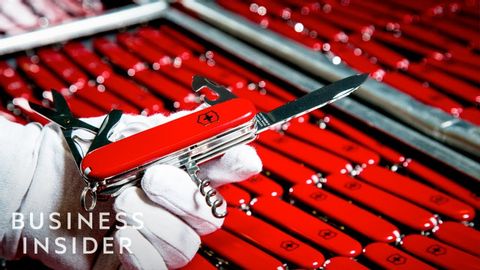超過百年歷史的經典瑞士軍刀是如何製造的? (How Swiss Army Knives Are Made | The Making Of)
 沒有此條件下的單字
沒有此條件下的單字US /ˈprɑsˌɛs, ˈproˌsɛs/
・
UK /prə'ses/
- v.t.用電腦處理(資料);(依照規定程序)處理;處理;流程;加工;理解
- n. (c./u.)(規定的)程序;過程;進程;方法;法律程序;進程
US /ɪɡˈzækt/
・
UK /ɪɡ'zækt/
US /vəˈraɪɪti/
・
UK /və'raɪətɪ/
